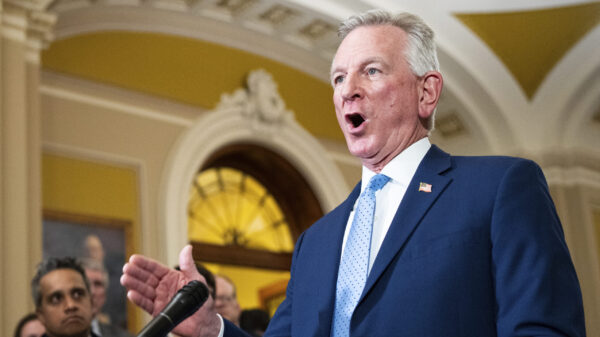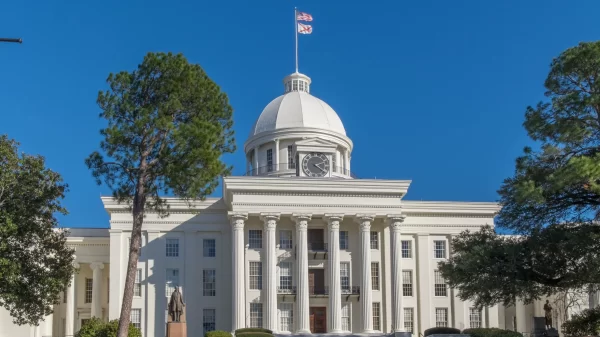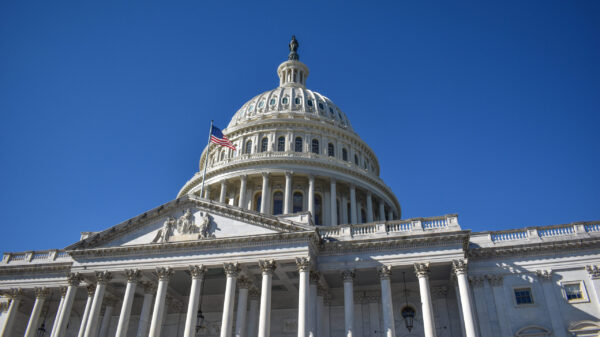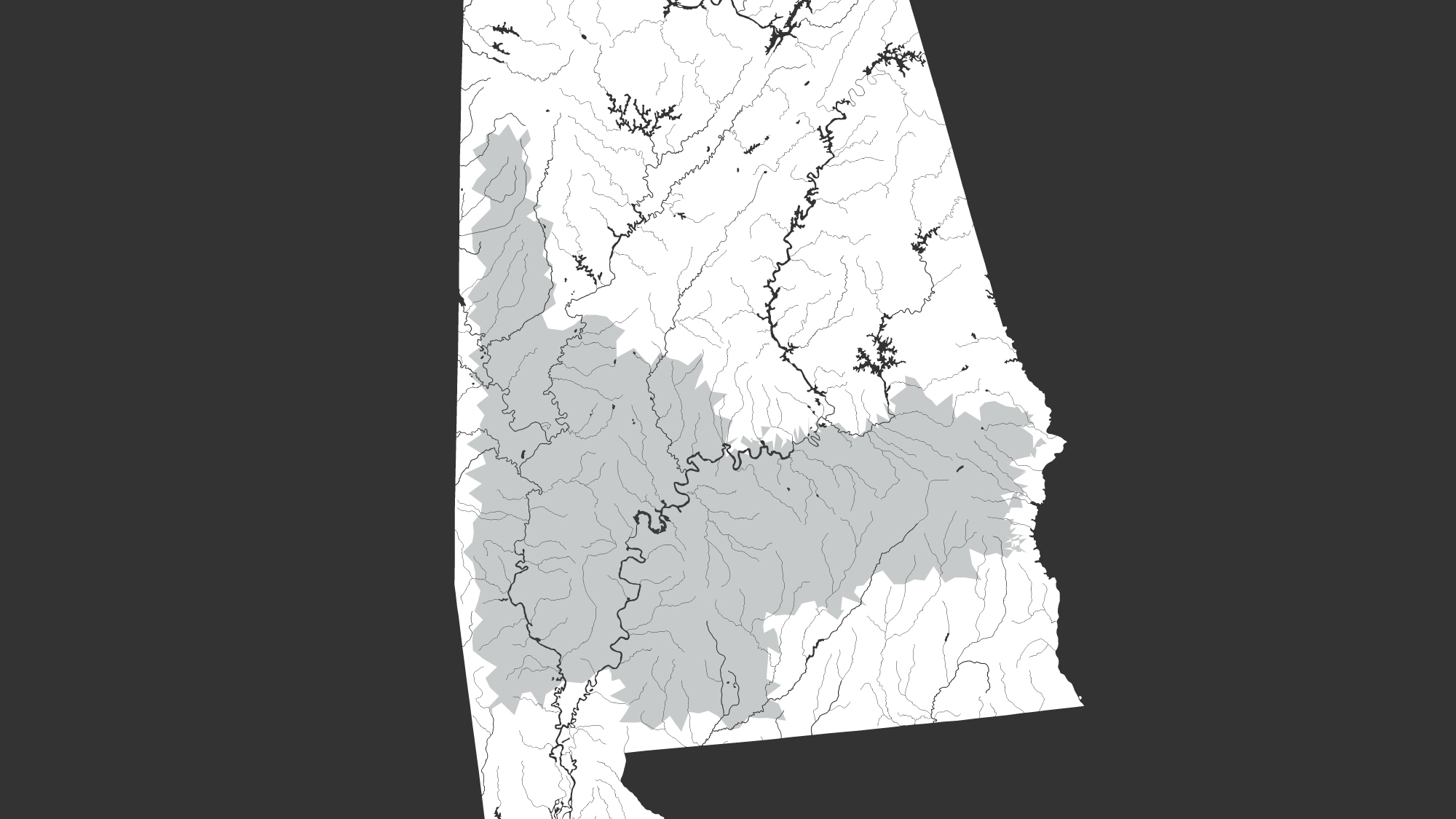On Thursday, the University of Alabama’s Education Policy Center published a new policy brief entitled “Healthcare in Alabama’s Black Belt: Impacts of Potential Medicaid Cuts.” The brief details the long-standing healthcare disparities facing Alabama’s Black Belt region and warns that those disparities could be further exacerbated by the severe Medicaid cuts currently being considered by congressional Republicans.
“The 24 counties in Alabama’s Black Belt along with the other 156 persistent poverty counties of the Deep South, continue to face the state’s most severe healthcare challenges,” reads the brief’s introduction. “There are long-standing gaps in access to care, shortages of healthcare providers, including general practitioners, family doctors, specialists, and dentists. Potential Medicaid policy decisions have exacerbated the broader social and economic barriers.”
“The Black Belt represents 13 percent of the state’s population, yet its challenges have an outsized impact on Alabama’s public health landscape. Rates of chronic disease, preventable hospitalizations, and poor health outcomes are consistently higher in the Black Belt than in other parts of the state, highlighting deep-rooted inequities that require more than short-term solutions,” the brief continues.

21 of its most Medicaid-dependent counties lie within the Black Belt, where 28 percent of the average county is covered by Medicaid, significantly higher than the state average.
One of the most daunting healthcare challenges facing the Black Belt is the region’s severe shortage of providers and facilities. As the brief notes, “In many rural areas, the nearest hospital or clinic can be over an hour away, making timely access to care incredibly difficult for residents.”
Citing data from the Centers for Medicare and Medicaid Services, the authors report that, on average, Black Belt counties have far fewer providers per resident, with 4,130 residents per primary care physician compared to 2,570 residents per physician in non-Black Belt counties.
“This means that residents in the Black Belt must share fewer providers across a larger population, making timely access to care more difficult and potentially delaying treatment for preventable conditions,” they write.
With a lack of adequate and convenient in-person treatment options, alternative healthcare delivery methods like telehealth can become increasingly attractive for Black Belt residents. However, the brief’s authors find that in addition to lacking provider facilities, several Black Belt counties also lack reliable broadband coverage, restricting the ability of telehealth services to “alleviate provider shortages and improve access to care.”
These broadband dead zones are themselves reflective of “historical patterns of disinvestment” in the Black Belt, which can also be seen in the region’s low educational attainment, limited employment opportunities, and lack of physical infrastructure investments. Lack of critical investment in all of these areas have contributed to the disproportionately poor healthcare outcomes found in the Black Belt when comparing the region to the rest of the state.
“The Black Belt counties consistently rank among the lowest in Alabama for critical health outcomes, including rates of diabetes, heart disease, and infant mortality,” the authors write. “According to the Centers for Disease Control, the rate of diabetes in the Black Belt averages at 18 percent, which is 6 percent higher than that of the state’s non-Black Belt counties. In fact, the top 12 counties in the state for the highest rate of diabetes are in the Black Belt.”
Black Belt residents also face a higher average rate of coronary heart disease (9 percent) than Alabamians who live in other counties (7 percent).
The authors further underscore the region’s healthcare disparities by noting the outsized number of deaths in the Black Belt as a result of the COVID-19 pandemic. On average, there were 218 COVID-19 deaths per 100,000 residents in the 25 Black Belt counties during the height of the pandemic, a 30 percent higher rate than the non-Black Belt average of 168 COVID-19 deaths per 100,000 residents.
The Black Belt also has a disproportionate shortage of mental healthcare providers, although this disparity varies within the region. In general, there are 3,490 residents per mental health provider in the Black Belt, versus 2,270 in non-Black Belt counties. However, counties in the Eastern Black Belt, like Macon and Montgomery, have fewer than 200-400 residents per mental health provider due to the positive impact of community-based health organizations like Five Horizons Health Services. Meanwhile, counties along the Mississippi border, like Lowndes, have much higher resident-to-provider ratios.
Disparities in all forms of healthcare are only worsened for Black Belt residents by the closure of rural hospitals across the state. Since 2010, 10 rural hospitals have closed in Alabama, including 7 that had served Black Belt communities. The authors highlight Alabama’s decision not to expand Medicaid through the Affordable Care Act as a substantial contributor to these closures.
“Alabama’s 2014 decision not to expand Medicaid has played a significant role in these hospital closures. A 2019 study showed that hospitals in states that expanded Medicaid are 84 percent less likely to close,” the brief states.
“The absence of Medicaid expansion has left a significant coverage gap in Alabama, particularly affecting Black Belt residents,” it continues. “In Alabama, approximately 220,000 residents fall into the ‘Medicaid gap’ – they earn too much to qualify for traditional Medicaid but too little to qualify for subsidies on the health insurance marketplace. Many of these individuals reside in the Black Belt, where poverty rates exceed the state average.”
Now, the negative influence of Alabama’s own Medicaid mismanagement may only be worsened by the Republican budget proposal currently being considered in the U.S. Senate—a proposal which could result in an estimated $75.5 billion in Medicaid funding cuts across the 10 states who have yet to expand Medicaid.
“A significant concern within this proposed legislation is the Senate’s tactics for increasing Medicaid funding to hospitals, specifically Medicaid provider taxes. While critics contend these taxes are a mechanism for states to gain federal funding without direct state expenditure, provider groups and states emphasize that these taxes are deeply embedded in Medicaid financing and provide a steady revenue stream for hospitals, many of which operate on thin margins and face the threat of closure,” the authors write. “For non-expansion states like Alabama, the proposed legislation would freeze current provider tax rates and prohibit the imposition of new taxes. This presents a particular challenge for Alabama, as 21 of its most Medicaid-dependent counties lie within the Black Belt, where 28 percent of the average county is covered by Medicaid, significantly higher than the state average [of 23 percent].”
“Such restrictions on a vital funding mechanism could further strain Alabama’s healthcare system, particularly impacting rural hospitals,” the report continues. “According to the nonpartisan Congressional Budget Office, these changes could reduce healthcare coverage for an estimated 8.6 million Americans over the next decade. While Alabama may not face immediate cuts to its current provider tax (around 6 percent), the inability to increase this funding source in the future is a major concern. Given rising healthcare costs and inflation, a fixed provider tax will likely leave hospitals ‘in the hole’ within the next year, limiting their ability to provide care. This is particularly worrisome for Alabama, which relies heavily on provider taxes to support its Medicaid system.”
Again, the challenges posed by the provider tax freeze and other proposed Medicaid cuts would likely hit Black Belt counties the hardest due to their pre-existing shortage of affordable and accessible healthcare.
“For Alabama’s Black Belt counties, where hospital closures and limited healthcare access are already critical concerns, such reductions could exacerbate existing challenges,” the authors write. “While Alabama’s decision not to expand Medicaid may make the proposed cuts ‘less bad’ for the state compared to expansion states, according to Druid City Hospital System CEO Katrina Keefer, the impact would still be significant for hospitals already struggling with high uninsured populations.”
And, according to Danne Howard, deputy director and COO of the Alabama Hospital Association, further rural hospital closures in Alabama would not threaten Black Belt communities alone.
“The rural issue is not just about rural Alabama, it’s about all of us. If the rural hospitals are not there stable enough, urban hospitals cannot absorb the volume,” Howard said in a recent interview. According to Howard, 27 Alabama hospitals are already in danger of closing, with 19 at immediate risk.
While both the Black Belt and the entire state of Alabama continue to face increasingly threatening healthcare challenges, the Education Policy Center report concludes by offering policy recommendations and potential paths forward for addressing these issues.
Firstly, the authors note the importance of “bottom-up” investments, like the establishment of the Alabama School of Healthcare Sciences in Demopolis, the community-based efforts of the University of Alabama’s Equitable Neighborhoods Initiative, and Five Horizons Health Services’ initiative to expand mental health access in the western half of the Black Belt. They suggest that leaders in the state pursue policies that support such initiatives.
And while these investments are valuable, the authors also argue that structural changes to Alabama’s Medicaid policies are desperately needed.
“The evidence from expansion states demonstrates that Medicaid expansion is not only beneficial for public health but also economically advantageous,” they write. “For the Black Belt, where healthcare disparities are most acute, expansion could be transformative, increasing access to care, creating jobs, preventing hospital closures, and injecting much-needed resources into struggling rural economies.”
Additionally, the authors call on state leaders to oppose the legislation proposed by congressional Republicans, which could result in $880 billion in Medicaid cuts and the loss of healthcare coverage for 8.6 million Americans.
“The federal government’s characterization of provider taxes as ‘money laundering’ is a political framing that should be challenged. This framing obscures the reality that these mechanisms are vital for funding healthcare in many states, including Alabama, and that limiting them effectively shifts the cost burden to states and ultimately jeopardizes patient care,” the brief states.
Lastly, the authors stress the importance of addressing provider shortages in the Black Belt—the root of many of the region’s health disparities.
“Policies should incentivize healthcare professionals to practice in rural areas, potentially through programs like the Alabama School of Healthcare Sciences, and address structural factors that contribute to ‘provider flight,'” they write.
“As Alabama continues to navigate healthcare policy decisions, the impact on its most vulnerable communities must be a primary consideration. The health of the Black Belt reflects the health of Alabama as a whole, and investments in equitable healthcare access today will yield dividends in improved health outcomes, economic vitality, and quality of life for generations to come,” the authors conclude.



















































